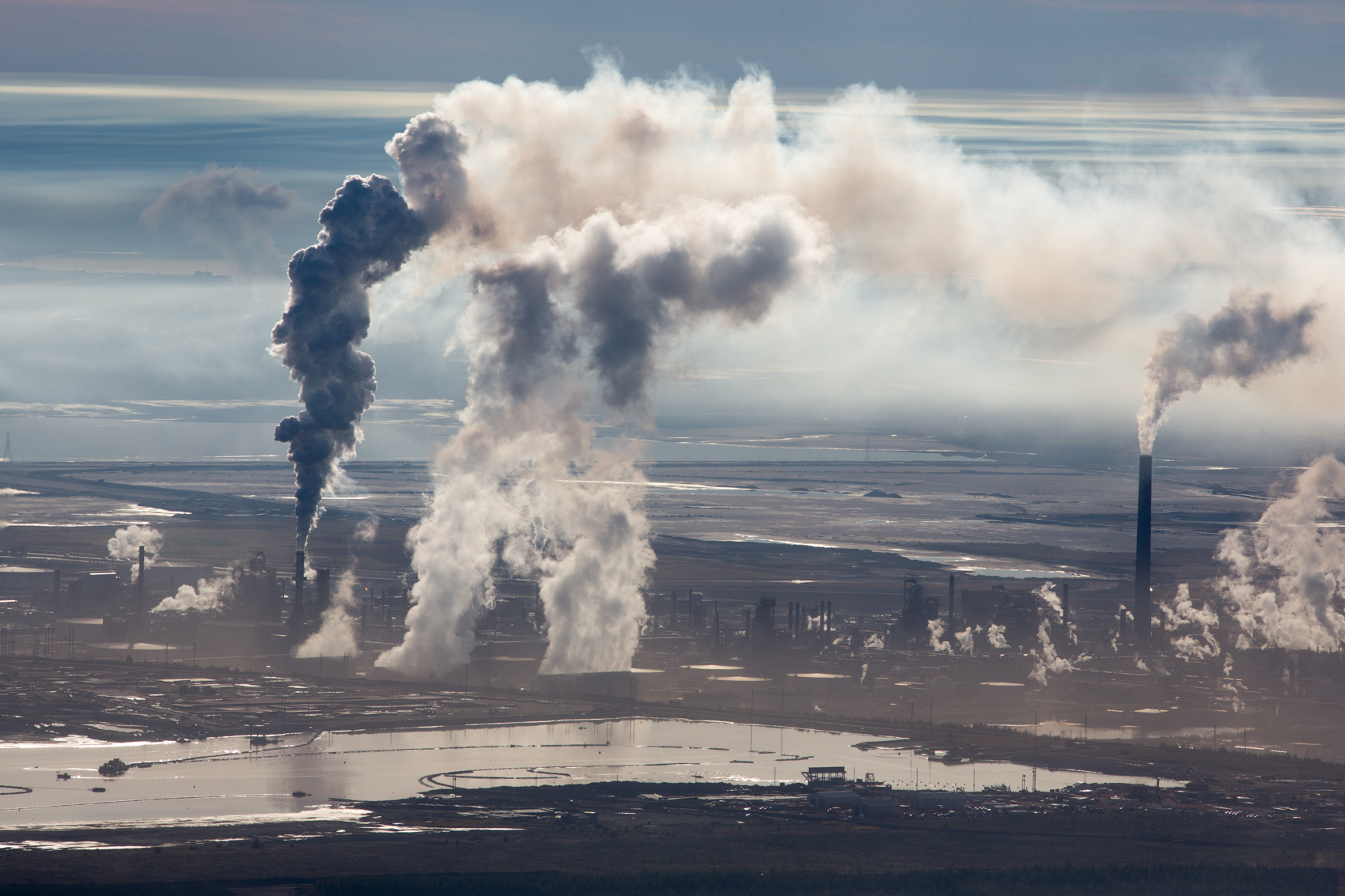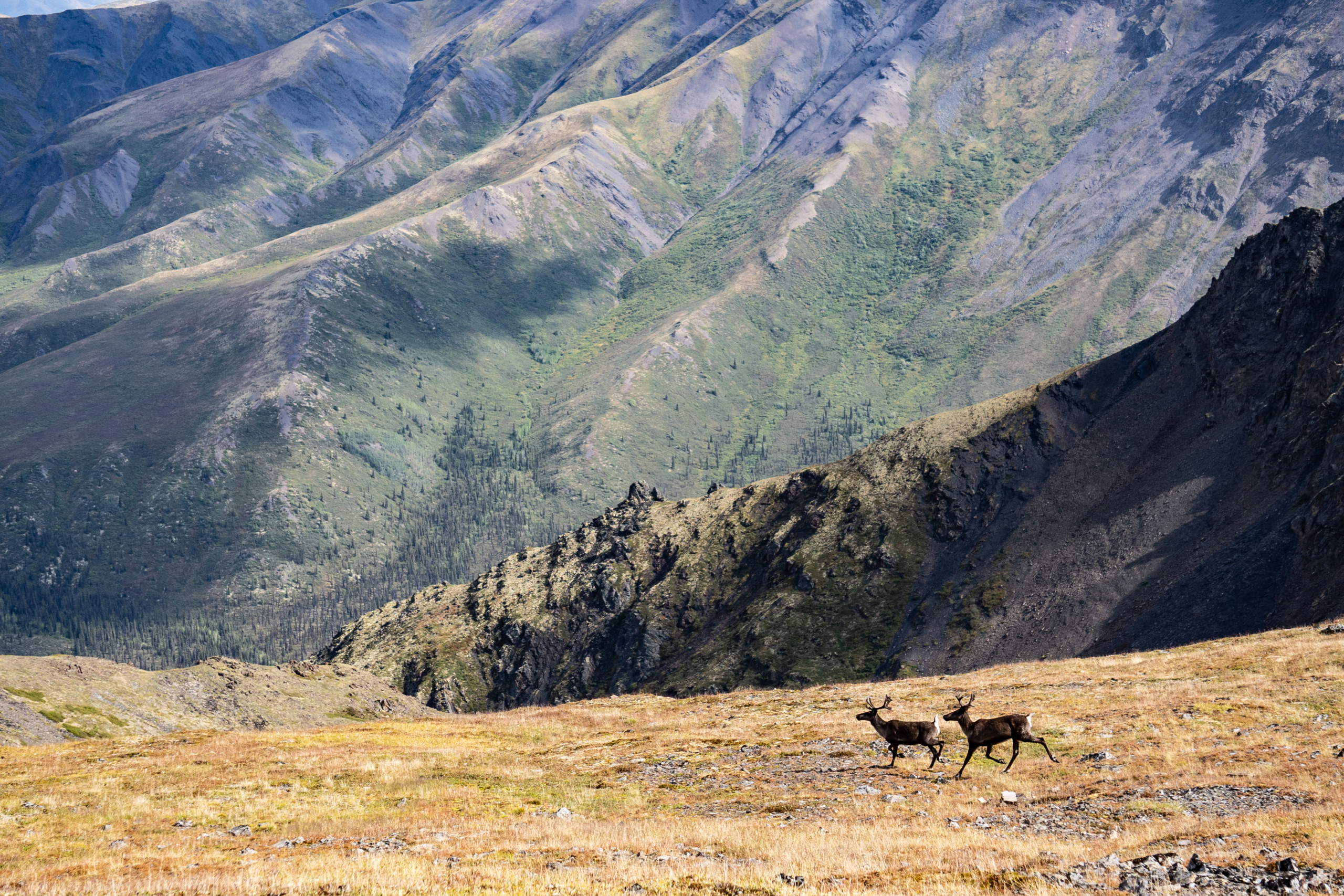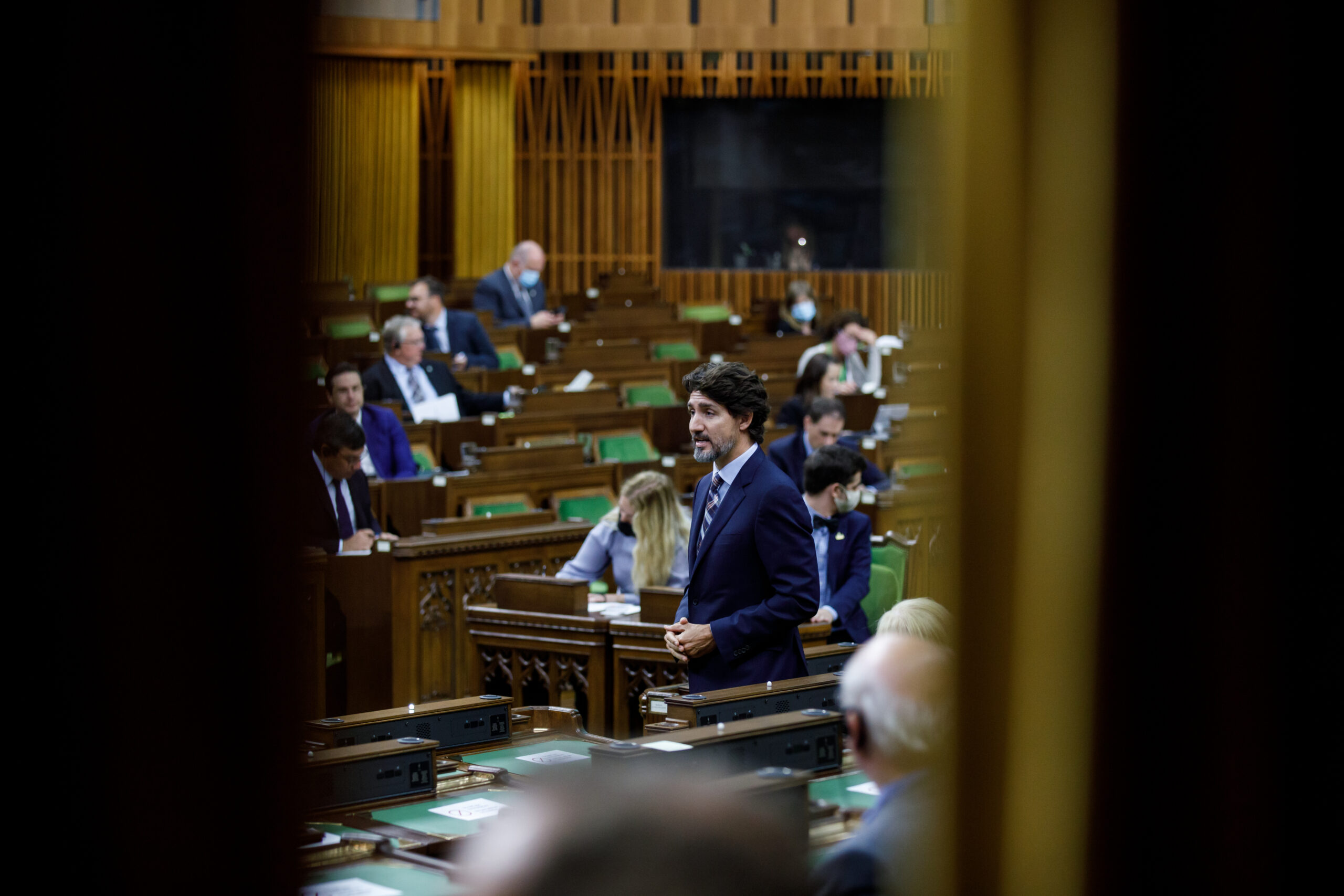
What Carney’s win means for environment and climate issues in Canada
Mark Carney and the Liberals have won the 2025 election. Here’s what that means for...
We’re a decade away from blowing our global carbon budget and exceeding the 1.5 C temperature target set in the Paris Agreement, according to a new study published in Nature Communications.
“We have a limited amount of carbon that we’re allowed to burn over time, a carbon budget that is not going to replenish itself,” said Damon Matthews, lead author of the report and a climate scientist at Concordia University.
The new research determined we can only add 440 gigatonnes of emissions to the atmosphere before the temperature of the planet increases 1.5 C above pre-industrial levels. The calculation was based on the current rate of global emissions, which is about 40 gigatonnes per year.
This budget is slightly more conservative than the estimate from the Intergovernmental Panel on Climate Change. In 2018, the panel determined that we have 580 gigatonnes left, which means we’re down to about 500 gigatonnes today based on existing rates of emissions.
Meanwhile, another climate scientist — Kirsten Zickfeld at Simon Fraser University — said Canada will overspend on its share of the budget in four or five years unless the country makes rapid changes to its rate of emissions. Her calculation was based on a target of 2 C and used a per-capita model, which allocates every person on the planet an equal amount of emissions.
“Every year matters. If we overspend now, we’ll have to save a lot later on,” she said. “That’s where the carbon budget comes in — it shows us nicely that if we drag our feet now, then this will require very painful and more costly reductions down the line.”
But what exactly is a carbon budget and why is it important? Here’s everything you need to know from climate accounting 101.
A carbon budget represents the total amount of emissions that can be emitted in the future in a given region while limiting global warming to a given temperature target, such as the levels laid out in the Paris Agreement.
The international treaty set a temperature target of “well below 2 C” and preferably no higher than 1.5 C above pre-industrial levels. It has been adopted by more than 200 countries since it was formalized in 2016. Those countries are responsible for developing and communicating plans for reducing greenhouse gas emissions in line with the international targets.
Matthews compared a carbon budget to a financial budget.
“You have this much money, you can spend it however you want. If you spend more sooner, you’ll have less to spend later, but you’re never going to get more,” he said. “So, this is your budget: you have to stick within it and if you don’t, then you go into debt, or in this case, we exceed our climate objectives.”
Emissions reduction targets represent the percentage amounts by which jurisdictions aim to reduce their greenhouse gas emissions from benchmark levels by specific times. They are an essential element of most jurisdictions’ climate policies.
Emissions reduction targets may or may not be set with the objective of staying within a carbon budget. As Marc Lee, senior economist with the Canadian Centre for Policy Alternatives, pointed out, targets are often arbitrary and the Government of Canada has missed every one it has set, as illustrated in a recent Ecojustice report.
Regardless of whether a target is set with a budget in mind, targets and budgets are intrinsically connected — reducing emissions now leaves room in the budget for more emissions later.

Alberta’s oilsands, including this Syncrude facility, emit roughly 70 megatonnes of emissions every year, according to the provincial government. Canada’s remaining share of the global carbon budget — based on limiting warming to 2 C and using a per-capita model — is about three gigatonnes, which it will produce in about four or five years at current rates, according to a calculation by climate scientist Kirsten Zickfeld. Photo: Alex MacLean
Carbon budgets provide stronger frameworks to set targets and support long-term planning, Lee said.
When targets aren’t tied to budgets, governments can change them whenever success looks unlikely. Take B.C. for example. In 2007, Gordon Campbell’s BC Liberal government committed to a 33 per cent reduction below 2007 levels by 2020. Not only was that target missed, emissions actually went up. Last month, the province committed to a new interim target of a 16 per cent reduction below 2007 levels by 2025.
“We need to be planning so emissions are going down every single year, instead of talking about a target, putting some measures on the table and then saying, ‘Oh, surprise! We didn’t meet our target,’ ” Lee said.
Carbon budgets help keep jurisdictions accountable and allow them to see if emissions reduction targets are consistent with the end goal of limiting global warming, Zickfeld added.
Over the past decade, scientists have proposed several different formulas for calculating carbon budgets. What these formulas have in common is they compare historical emissions to the past rate of global warming to predict future warming. But they differ in how they account for non-carbon emissions and other uncertainties.
The Intergovernmental Panel on Climate Change calculates the global total using a model based on the amount of warming that has occurred since the mid-1800s, when emissions started accumulating in the atmosphere. The calculation also accounts for other contributions to climate change, such as non-carbon greenhouse gases, aerosols and the thawing of permafrost.
In a recent report published in the journal Nature GeoScience, Zickfeld, Matthews and colleagues said uncertainties “can be used to either trivialize the most ambitious mitigation targets by characterizing them as impossible, or to argue that there is ample time to allow for a gradual transition to a low-carbon economy.”

Caribou walk on permafrost in Tombstone Territorial Park in Yukon. Thawing permafrost is one of the factors the Intergovernmental Panel on Climate Change accounts for in its carbon budget calculation. Photo: Jimmy Thomson / The Narwhal
The report offers recommendations for calculating budgets to ensure they’re transparent and traceable. It says carbon budgets should be clearly defined in relation to the target of either 1.5 C or 2 C as set out in the Paris Agreement. It also recommends clearly defining the chances of success. Carbon budgets are typically calculated for either a 50 or 67 per cent chance of limiting warming to the temperature target. (Matthews said the 440 gigatonne calculation is based on a 50 per cent chance of limiting warming to 1.5 C. If we want to increase our chances to 67 per cent, we only have 230 gigatonnes left.)
The report adds that any areas of uncertainty that could impact the numbers should be clearly defined and noted and assumptions about future carbon capture efforts, such as reforestation, should not be included.
Consistency is crucial, Zickfeld explained.
“At the scientific level, it is very important because those global carbon budget numbers, that’s what governments and nations will ultimately use if they’re interested in coming up with national budgets.”
Few jurisdictions have national or regional carbon budgets, according to Matthews, but the model can be applied on any scale — even on a municipal level.
The United Kingdom and the European Union have adopted region-specific carbon budgets to inform climate policy and set clear targets. Other countries, including Canada, do not have carbon budgets but have set targets based on the international model.
Last fall, the City of Edmonton declared a climate emergency and officially adopted a carbon budget, noting it can only emit 135 megatonnes before 2050. The city created its budget based on the international model.
Matthews said the simple answer is it’s a relatively new concept.
“The emissions targets that are being set now were negotiated a decade ago, and it was really only a decade ago that the idea of a carbon budget started to emerge from the science.”
He added that the concept has impacted policy on climate action in recent years, here in Canada and elsewhere, as countries set net-zero emissions targets based on the simple fact that the global carbon budget will eventually run out.
“What we’re seeing now is that countries are starting to change their targets, and they’re starting to increasingly adopt net-zero targets. This is a reflection of the idea of a carbon budget.”

The federal government’s climate plan includes a promise to reach net-zero emissions by 2050. However, critics say Canada needs to go further on its climate commitments. Photo: Justin Trudeau / Flickr
The Trudeau government committed to reaching net zero by 2050 during the last election campaign and tabled a bill to legislate that commitment in late 2020. The bill requires the minister of Environment and Climate Change to set five-year emissions reductions targets starting in 2030 to meet that goal.
In an emailed statement, Environment and Climate Canada said it is taking more than 60 measures to get to net zero.
“Key measures include carbon pricing, emissions reductions regulations for light-duty and heavy-duty vehicles, strengthened methane regulations for the oil and gas and landfill sectors, energy efficiency improvements and investments in clean electrification,” the statement said.
In a recent article about the research into carbon budgets, Matthews and colleague Kasia Tokarska warned Canada’s commitment isn’t ambitious enough.
“Our results suggest that even if the growing list of countries committing to 2050 net-zero emissions targets reached their goals, we would still deplete the 1.5 C remaining carbon budget more than a decade too soon.”
This is a significant ethical problem, according to climate scientists working on carbon budgets. The simplest way to calculate a national allocation is to take the global carbon budget, divide it by the number of people on the planet and multiply that number by a country’s population. But that doesn’t account for inequities on the international landscape.
“The UK has a 200-year history of burning CO2 and has an economy that has profited from that history,” Matthews said, by way of an example. “[The UK] has produced much more greenhouse gases per capita than most countries in the world, and is far more responsible for the problem that we’re in right now.”
He said given that history, an argument can be made that the UK — and other countries with similar histories, including Canada — should be ramping down emissions considerably faster than other nations, especially developing countries.
“If we have a global target of net zero in 2050, they should be targeting 2040 or 2035, something ahead of the curve to reflect that additional responsibility.”
The ethical conundrum, he said, is every country in the world can construct a reasonable argument for why it deserves more of the carbon budget.
Warming above 1.5 C would dramatically increase extreme weather events and the risk of widespread ecosystem loss, and have dire impacts on ocean warming and acidification, according to the Intergovernmental Panel on Climate Change.
Those impacts would have dramatic effects on fisheries and coastal subsistence communities. Even at 1.5 C, the panel predicts a 70 to 90 per cent loss of coral reefs, and the associated impacts on species reliant on those ecosystems would be devastating. If the climate stabilized at 1.5 C of warming, the projected global sea level rise over the next 80 years would impact 10.4 million fewer people.

If the world exceeds 2 C of warming, we would need to say goodbye to many Arctic wildlife, including narwhals. Photo: Baffinland
At 2 C, the Arctic seas would be ice-free once every 10 years, compared to once every 100 years at 1.5 C. So long, polar bears. Adieu to our namesake narwhals. The number of species that would lose over half of their habitat doubles at 2 C compared to 1.5 C and at the higher temperature, the risks of coastal flooding and stress on food and water resources would increase dramatically.
“Every bit of warming that you allow will bring additional irreversible impacts,” Zickfeld said. “And there will be a huge benefit to avoiding each additional bit of warming. The climate crisis is as urgent as ever. We have only so much time.”
Matthews admitted reaching net-zero emissions before the budget is spent will be difficult, but told The Narwhal he believes it can be done.
“There’s lots of things that seem impossible until they become necessary and then all of a sudden they’re possible. I don’t think anyone would have said it would be possible for the entire world to stop leaving the house for a year. It would seem inconceivable.”
He said what’s needed is political will and corresponding effort.
“Emissions dropped by seven per cent last year, basically as a side effect of efforts to control COVID. If we actually diverted energy and investments towards doing that on purpose and dropped emissions by seven per cent every year for the next 15 years, we’d get to net zero by 2035.”
“If governments actually took climate change seriously, and gave it the attention and resources that it needs, we would be able to resolve the problem very quickly, much more quickly than most people would imagine.”
Get the inside scoop on The Narwhal’s environment and climate reporting by signing up for our free newsletter. When I visited my reserve, Moose Factory,...
Continue reading
Mark Carney and the Liberals have won the 2025 election. Here’s what that means for...

An invasive pest threatens the survival of black ash trees — and the Mohawk art...

Xatśūll First Nation is challenging B.C.’s approval of Mount Polley mine’s tailings dam raising. Indigenous...

